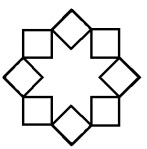


“Allah only desires to keep away uncleanness from you, O people of the House! and to purify you a (thorough) purifying” – Quran 33:33
“Imam Ja’far al-Sadiq said: “O Abi Hamza, verily there will be from us, after the Qa’im (Saheb uz-Zaman Imam Muhammad al-Mahdi al-Muntadhar), eleven Mahdis (Guided Ones) from the sons of al-Husayn.” – Ghayba li Tusi, p.478, Hadith.504
“A royal spirit escaped from a prison; why should we rend our garments and how should we gnaw our hands. Since they (Imam al-Husayn and his family) were kings of the religion (Islam), it was the hour of joy for them when they broke their bounds.” – Rumi, Mathnawi Book Six, Verse 797-8

Star of Ishmael

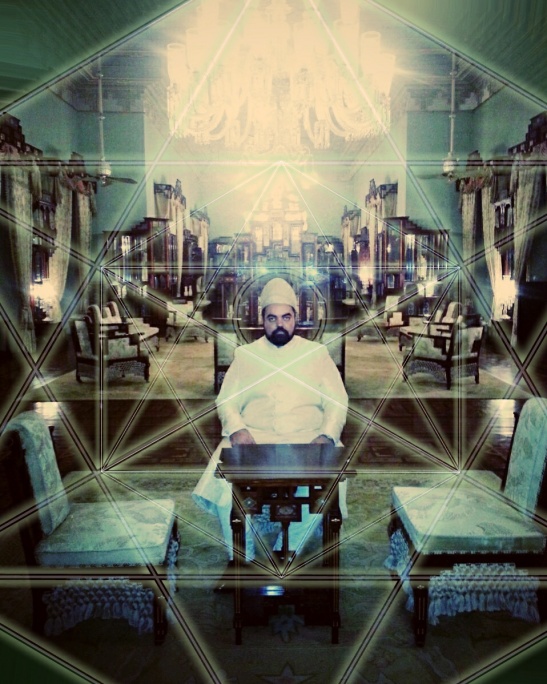
Sayyid Ahmed Amiruddin at the Falaknauma Palace, Hyderabad


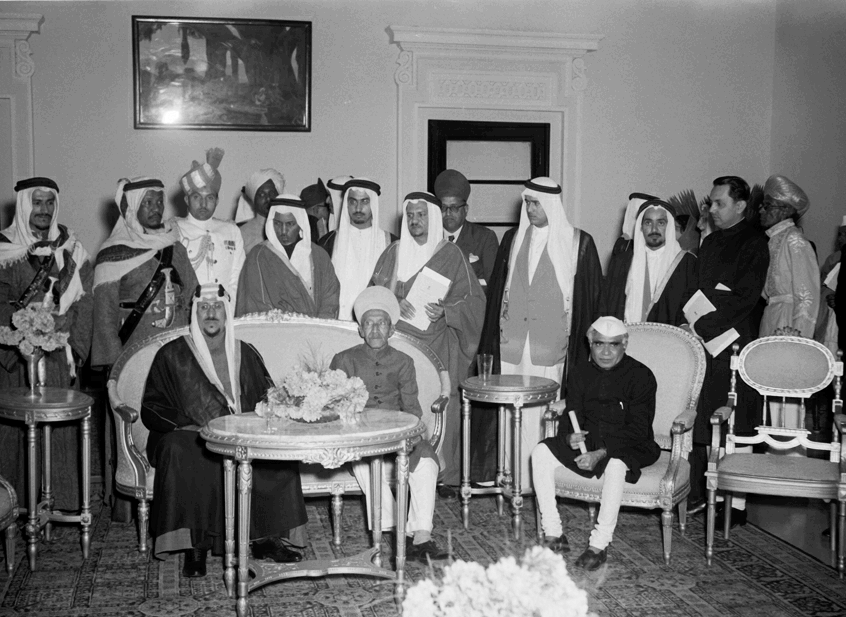
Sayyid Ahmed Amiruddin’s paternal grandfather Lord Nawab Lt. Colonel Sayyid Mohammed Amir ud-Din with H.E.H. the Nizam of Hyderabad Mir Osman Ali Khan Siddiqui Asaf Jah VII and H.M. King Saud bin Abdulaziz Al Saud the King of Saudi Arabia in Shahamanzil Palace, at Hyderabad on December 5, 1955. In the picture Lord Nawab Lt. Colonel Sayyid Mohammed Amir ud-Din is standing immediately behind H.M. King Saud bin Abdulaziz Al Saud.
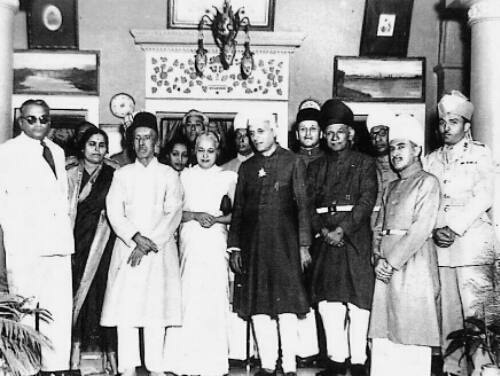
Lord Sayyid Ahmed Amiruddin’s paternal grandfather Lord Nawab Lt. Colonel Sayyid Mohammed Amir ud-Din, Military Secretary of H.E.H the Nizam (far right) with H.E.H. Mir Osman Ali Khan Siddiqui Asaf Jah VII, Nizam of Hyderabad, and India’s first Prime Minister Jawaharlal Nehru at the King Kothi Palace, Hyderabad.

Lord Nawab Lt. Colonel Sayyid Mohammed Amir ud-Din, Military Secretary of H.E.H the Nizam of Hyderabad with Major-General Syed Ahmed El Edroos, Commander-in-chief of the Hyderabad State Army, H.E.H. Mir Osman Ali Khan Siddiqui Asaf Jah VII, the Nizam of Hyderabad, and Mullath Kadingi Vellodi CIE, ICS among others in 1952. Vellodi was the first appointed Chief Minister of Hyderabad State by the government of India after Hyderabad joined the Indian Union.

Lord Nawab Lt. Colonel Sayyid Mohammed Amir ud-Din, Military Secretary of H.E.H the Nizam of Hyderabad with Major-General Syed Ahmed El Edroos, Commander-in-chief of the Hyderabad State Army, H.E.H. Mir Osman Ali Khan Siddiqui Asaf Jah VII, the Nizam of Hyderabad, and the Nizam’s Agent General in Delhi Nawab Zain Yar Jung paying final respects to Mahatma Gandhi.

Eleanor Roosevelt with H.E.H Asaf Jah VII the Nizam of Hyderabad on March 16, 1952. Behind Mrs. Roosevelt (far left in official head dress) is Lord Nawab Colonel Sayyid Mohammed Amiruddin, Lord Sayyid Ahmed Amiruddin’s paternal grandfather, the Military Secretary to H.E.H. the Nizam.

Eleanor Roosevelt with Lord Sayyid Ahmed Amiruddin’s paternal grandfather Lord Nawab Lt. Colonel Sayyid Mohammed Amir ud-Din, Military Secretary of H.E.H. Asaf Jah VII, the Nizam of Hyderabad

Star of Ishmael
Patrilineal Descent from Husaynid Royalty
31:14 “And We have enjoined on man (to be good) to his parents: in travail upon travail did his mother bear him, and in years twain was his weaning: (hear the command), “Show gratitude to Me and to thy parents: to Me is (thy final) Goal.”

A preserved fragment of Lord Sayyid Ahmed Amiruddin’s original paternal family tree written on parchment, tracing his descent back through al-Imam Hasan al-Askari (‘alaihi salam), to al-Imam Muhammad al-Taqi (‘alaihi salam) – son of al-Imam ‘Ali al-Ridha (‘alaihi salam), the Crown Prince of the Abbasid Empire. Sayyid’s ancestors were originally from Arabia. Imam Hasan al-Askari (‘alaihi salam) was born in the Holy City of Medina.

Fragments from Lord Sayyid Ahmed Amiruddin’s paternal family tree displayed by the Office of the Naqib al-Ashraf of Samarqand and Bukhara from original scans they received from him tracing his lineage from Imam Hasan al-Askari to his great great great grandfather.

Official pedigree documentation from the Office of the Naqib al-Ashraf of Samarqand and Bukhara of paternal ancestral relatives of Lord Sayyid Ahmed Amiruddin who migrated from Samarra, Iraq to Bukhara & Samarqand whose lineage traced back to Iraq’s Arabian Husaynid royalty: the eleventh biological dynasty of Ahl al-Bayt, the House of Imam Hasan al-Askari (‘alaihi salam), whose great grandfather Imam ‘Ali al-Ridha (‘alaihi salam) was the Crown Prince of the Abbasid Empire. The ancestors of Lord Sayyid Ahmed Amiruddin were from Arabia.
The Royal House of Hashem and the House of David by Sayyid Ahmed Amiruddin

History
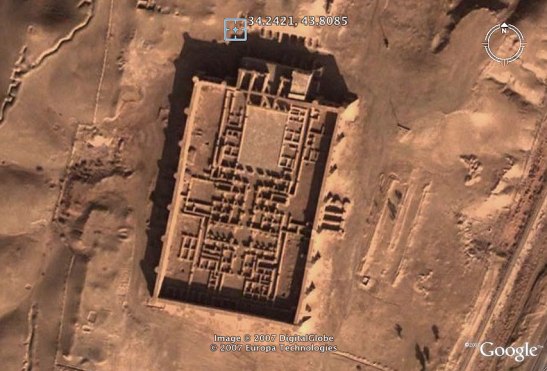
Qasr al-‘Ashiq (medieval name: al-Ma’shuq – ‘The Beloved’) or Palace of the Beloved built between 870-882 in Samarra, Iraq. Given 861-870 were the years of the “Anarchy at Samarra” and Mu’tamid (reign 870-892) was under Turkish house arrest during the vast majority of his symbolic reign, it is highly unlikely Mu’tamid, who also failed an attempted desperate escape from Samarra as caliph in 882 could have constructed this palace. It is more likely it was built for Imam Hasan al-Askari (d.874), the 11th Imam, or his father Imam ‘Ali al-Hadi (d.868), the grandson and generational heir to Imam ‘Ali al-Rida; the Crown Prince of the Abbasid Empire during Ma’mun’s reign.
Honorific Style
By most historic accounts, Imam Hasan al-Askari was born in Medina on the 10th of Rabi al-Akhir 232 Hijri (846 AD) and died in Samarra on the 8th of Rabi al-Awwal 260 Hijri (874 AD) aged 28 years.
Samarra (Sur Man Ra’) was a military city about 60 miles north of Baghdad and the new capital of the Abbasid empire. The word ‘Askar’ in Arabic is used for a military. Imam Hasan b. ‘Ali b. Muhammad was conferred the honorific style al-Askari by the caliph because he commanded a large private military of lancers and swords men. According to most historians, the Imam’s private military was the largest in the empire, and his influence exceeded that of the caliph, who was confined to house arrest by the Turks for most of his reign.
Descendants
The history of the descendants of Imam Hasan al-Askari (d. 874) is shrouded in great mystery and accordingly, has of recent been either outright denied due to ignorance or simply intentionally concealed. Unrelated official historic family tree documents kept in renowned Sayyid families and even in the offices of the Naqib al-Ashraf, from Hejaz, to Iran, Bukhara, Samarqand, Afghanistan, the Mughal Empire, Yemen, Somalia, Sudan and Luxor, Egypt have traced the descent of thousands of Sayyids over multiple generations back to Imam Hasan al-Askari.
The following traditions are shared from Sunni and Shiite hadith narratives and neutral academic sources to share with guests some historic record of the existence of a continuous line of descent from al-Imam Hasan al-Askari in addition to that of his eldest son and successor al-Imam Muhammad al-Mahdi al-Muntadhar.
According to the earliest reports as cited below from official family tree documents and records cited by multiple historians like Kashani, Arbali, Sahib Kashf ul-Ghumma, and Sahib Siraj al-Ansab among others, Imam Hasan al-Askari fathered seven children and was survived by six. The names of his illustrious biological children were: Imam Muhammad al-Mahdi ‘alaihi salam, Musa, Ja’far, Ibrahim, Fatima, Ayesha, and ‘Ali, sometimes referred to as Asghar. It is said Musa b. Hasan al-Askari passed away before the age of maturity or simply during his father’s life. Some of these narrations are as follows:
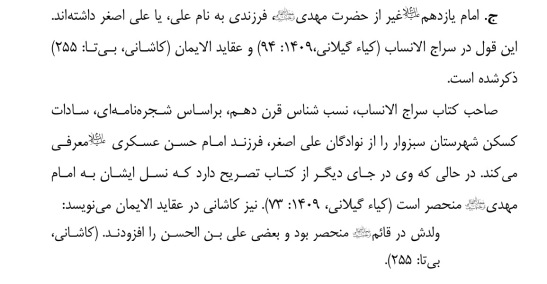
Although some contemporary Shiite historians now generally dismiss the classical narrative which states Imam Hasan al-Askari fathered children other than Imam Muhammad al-Mahdi, it crucial to point out even Imam Muhammad al-Mahdi’s birth was concealed by the Imam. Imam Muhammad b. Hasan al-Askari, like his siblings, was also not mentioned in any legal will document of the Imam nor was he granted inheritance of the vast estate of his father after he left the world. The Shiite hadith book Usul al-Kafi, in Bab Mawlid Abi Muhammad al-Hasan b. ‘Ali does confirm the classical narrative that Imam Hasan al-Askari had multiple handmaidens with whom he had relations. In his Usul, al-Kafi writes:
“When the caliph got news of Imam Hasan ‘Askari’s illness, he instructed his agents to keep a constant watch over the house of the Imam…he sent some of these midwives to examine the handmaidens of the Imam to determine if they were pregnant. If a handmaid was found pregnant she was detained and imprisoned…”[al-Kafi, by Muhammad Ya’qub Kulayni. Translated by Muhammad Sarwar. Chap. 124, Birth of Abi Muhammad al-Hasan ibn ‘Ali, p.705]
Additionally, there is mention of descendants of Imam Hasan al-Askari by Sunni traditionalists. In one of his lectures on the lives of Ahl al-Bayt, the renowned Sunni Sufi scholar Shaykh al-Islam Dr. Tahir ul-Qadri cites a text confirming the opinion Imam Hasan al-Askari also fathered a daughter named Ayesha. Dr. Qadri states, “Now we arrive at the mention of Imam Hasan al-Askari…he also had a daughter, she was a princess and her name was Ayesha.” [‘Imam Hasan al-Askari had a Daughter Named Ayesha’. Dr. Tahir ul-Qadri]
Furthermore, it is related in Kulayani’s Usul al-Kafi, in his last days when al-Imam Hasan al-Askari was ill he appointed his mother as the executer of his will so that she could manage his affairs after his death. This matter was officially approved by the Abbasid court. In this will, there was no mention of any offspring, including Imam Muhammad al-Mahdi. Imam Hasan al-Askari’s estate was subsequently divided between his mother and his brother. This tradition establishes for start that al-Imam Hasan al-Askari intentionally concealed the existence of his offspring, whether one, or more. [Usul al-Kafi, Bab Mawlid Abi Muhammad al-Hasan b.’Ali]
Additionally, according to Shaykh Saduq in his Kamal al-Din, after his death, al-Imam Hasan al-Askari’s mother entered into a dispute with Ja’far al-Zaki, his brother, over the estate of Imam Hasan al-Askari. The matter was referred to the Abbasid caliph, and to further complicate matters, one of the handmaidens of Imam Hasan al-Askari by the name of Sayqal came forward and claimed to be pregnant. Sayqal was brought to the palace of the Abbasid caliph, Mu’tamid, and was kept under strict guard and under the watchful eyes of the midwives and other women in the palace to determine the fate of her pregnancy. At that very time, political turmoil as a consequence of the insurrection led by Saffar, the death of ‘Abd Allah b. Yahya, and the revolution of the Zanj engulfed the caliphal state. The Abbasids were forced to abandon Samarra. Hence, they became occupied with their own troubles and gave up the surveillance of Sayqal’s pregnancy. [Kamal al-Din, Vol. 2, p. 149]
According to the Bihar, al-Imam Hasan al-Askari had several handmaidens with different names. On two occasions Hakima Khatun, his paternal aunt, has mentioned these handmaidens. At one time she came to visit al-Imam Hasan al-Askari and saw him seated in the courtyard of his house, surrounded by his handmaidens. She asked him: “Which one of these girls is going to be the mother of your successor?” The Imam replied: “It is Sawsan.” [Bihar al-anwar, Vol. 51, p. 17]
In another report Hakima Khatun relates the event of the birth of the twelfth Imam, cited earlier, in which al-Imam Hasan al-Askari requests her to spend the night of 15th Sha’ban (255 AH/870 CE) in his house because a child was going to be born. At that point Hakima asked him: “Which of your handmaidens is the mother of the child?” The Imam said: “It is Narjis.” Hakima said: “Yes, I too like her the most among your handmaidens.” [Bihar al-anwar, Vol. 51, p. 25]
According to the Bihar: One of the companions of Imam Hasan al-Askari by the name of Ibrahim b. Idris relates that the Imam sent him a sheep with a message that he should sacrifice it for the latter’s having performed the ceremony of shaving off his child’s birth hair (‘aqiqa), and share the meat with his family. Ibrahim carried out the Imam’s order. But when he came to see him the Imam said: “Our child has passed.” However, once again he sent Ibrahim two sheep with a letter in which the Imam instructed Ibrahim: In the Name of God, the Merciful, the Compassionate. Sacrifice these sheep for your master’s ceremony of ‘aqiqa and eat the meat with your family. Ibrahim carried out the order. But when he came to see the Imam the latter did not mention anything about it. [Bihar al-anwar, Vol. 51, p. 22]
Traditionally, one sheep is sacrificed when a daughter is born, and two when a son is born.
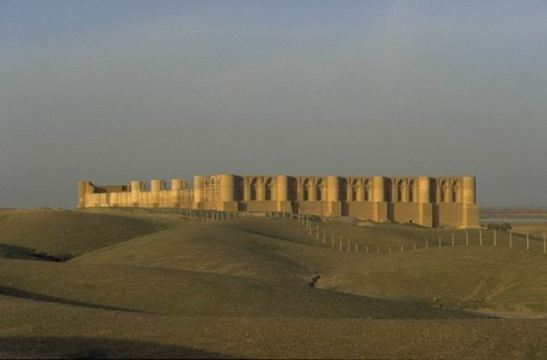
Qasr al-‘Ashiq (al-Ma’shuq) or Palace of the Beloved built between 870-882 in Samarra, Iraq
Delhi Sultanate
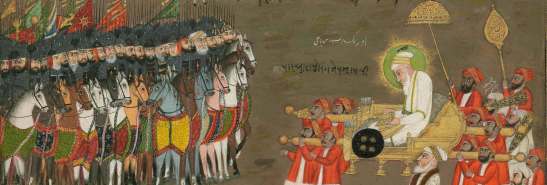
Mughal Emperor Aurangzeb on his military expedition in Hyderabad, Deccan attacking the last Qutb Shahi stronghold of Golconda Fort.
Family history accounts state the first of Lord Sayyid Ahmed Amiruddin’s ancestors to migrate to Hindustan came during the reign of the Mughal Emperor Aurangzeb (d.1707) who invited them to his court where he honored them and given command over an army, the Emperor’s sword, and the title Asaf Jah. This sword of the Emperor could cut through metal and remained with Lord Sayyid’s family until it was stolen in and around 1961. Asaf Jah, or the one bestowed with wisdom of Asaf b. Barkhiya, the Grand Vizier in the court of King Solomon, was the highest title that could be awarded in the Mughal Empire.
Lord Sayyid’s family accompanied Mir Qamar-ud-din Khan Siddiqi Bayafandi (d.1748), Asaf Jah I along with other nobles to the Deccan on the direction of the Emperor. Lord Sayyid’s ancestors were the only other family in the Deccan to carry the honorific Asaf Jah along with the ruling family of Mir Qamar-ud-din Khan Siddiqi.
In his book “The Caste System of Northern India with Special Reference to the United Provinces of Agra and Oudh” published by Oxford University Press in 1931, on page 186 Sir Edward Arthur Henry Blunt documented the various branches of the Sayyid families who migrated to the Delhi Sultanate. This documentation included descendants of Imam Hasan al-Askari.

Sir Edward Arthur Henry Blunt (1931). The Caste System of Northern India with Special Reference to the United Provinces of Agra and Oudh. Oxford University Press. P. 186
In her book “Pain and Grace: A Study of Two Mystical Writers of Eighteenth-Century Muslim India” p. 32, Dr. Annemarie Schimmel writes: “Khwaja Mir Dard’s family, like many nobles, from Bukhara; led their pedigree back to Baha’uddin Naqshband, after whom the Naqshbandi order is named, and who was a descendant, in the 13th generation of the 11th…imam al-Hasan al-Askari.”
In the Islamic Republic of Iran a research paper was authored in 2013 by the title: AN EXPLORATION IN THE FIELD OF IMAM HASAN ASKARI’S SONS- AND THE AUTHENTICITY OF A SHRINE ATTRIBUTED TO HIM. This paper was published in the Journal: ENTIZAR E MOUD in the Fall of 2013, Volume 13, Number 42; Page(s) 97 To 125. The paper tries to verify the attribution of an offspring to Imam Hasan Askari with a descriptive-analytic method besides Imam Muhammad al-Mahdi. The very existence of such a study makes apparent the Islamic Republic of Iran is also home to nobles among the Sayyids whose ancestors claimed descent from Imam Hasan al-Askari.
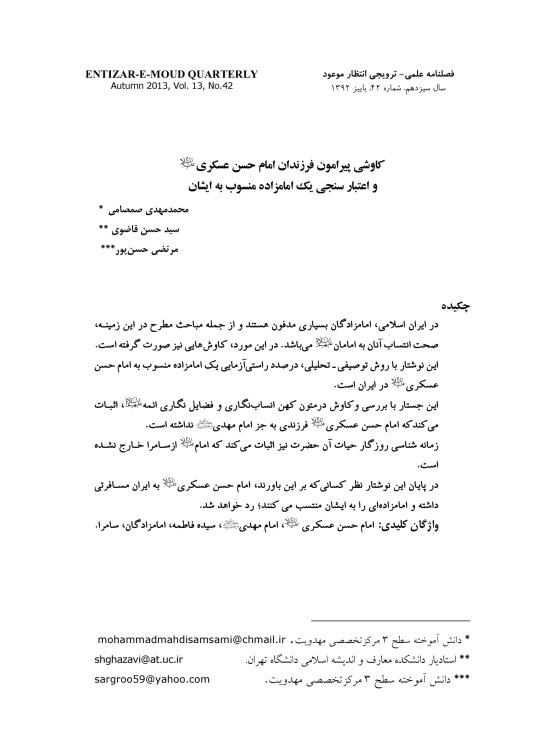
The above examples demonstrate the existence of unrelated nobles throughout the old Muslim world who possessed independent family trees that traced their biological lineage back to al-Imam Hasan al-Askari.

Ancestry & Family Lineage

Like the venerable Khwaja Moin al-Din Chisti Ajmeri and Khwaja Baha al-Din Shah Naqshband Bukhari, Lord Sayyid Ahmed Amiruddin is a direct lineal descendant of the House of the Prophet sallallahu alaihi wa sallam on his paternal side through the eleventh dynasty of Ahl al-Bayt; from the House of al-Imam Hasan al-Askari ‘alaihi salam. Among Lord Sayyid’s ancestors in this line is also al-Imam Ja’far al-Sadiq, progenitor of the Fatimid Empire of Egypt and his grandson al-Imam ‘Ali ibn Musa al-Rida ‘alaihi salam. Al-Imam al-Rida was the Crown Prince of the Abbasid Empire and the declared successor to the the seventh Abbasid caliph Ma’mun al-Rashid. Ma’mun al-Rashid was the first documented Arab king in post ancient-Egyptian history to enter the Great Pyramids of Giza. In the year 202 AH, Imam ‘Ali al-Rida was officially declared Crown Prince of the Abbasid Empire and currency was subsequently minted with the name of al-Imam al-Rida. According to the book “The Life of the Imam ‘Ali bin Musa al Rida” by Sharif al-Qurashi, the inscription on the coins read; “Allah, Mohammed is Allah’s Messenger, al-Ma’mun is the vicegerent of Allah, of what the Emir al-Rida, the regent over the Muslims, ‘Ali b. Musab. ‘Ali b. Abu Ta`lib has commanded.”
Additionally, Lord Sayyid Ahmed Amiruddin descends from the Imam and Caliph al-Hasan ibn ‘Ali ibn Abi Talib from his maternal grandmother, through her paternal descent from Sultan ul-Awliya Ghawth al-Adham al-Sayyid al-Sharif Shaykh Abi Muhammad ‘Abd al-Qadir al-Jilani.
In summary, according to his paternal and maternal family tree documentation, Lord Sayyid Ahmed Amiruddin descends from eleven of the twelve Imams from Iraq’s Arabian Husaynid royalty and from Iraq’s Arabian Hasanid aristocracy through the House of Sayyidina Shaykh ‘Abd al-Qadir al-Jilani.
Feudal Lords & Recognized Nobility
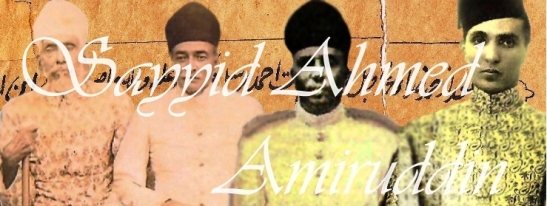
(Left to Right) Lord Sayyid Ahmed Amiruddin’s paternal great great great grandfather Secunder Yar Jang II Lord Nawab Sayyid Munir-ud-din titled Khan Asaf Jahi, Jagirdar, Taluqdar, Subedar, then his son, Karim Yar Jang Lord Nawab Sayyid Karim-ud-din titled Khan Asaf Jahi, Jagirdar, then his son, Lord Nawab Sayyid Farid-ud-din titled Khan Asaf Jahi then his son, Lord Nawab Lt. Col. Sayyid Mohammed Amir ud-Din titled Khan, the Military Secretary to H.E.H. Asaf Jah VII the Nizam of Hyderabad.
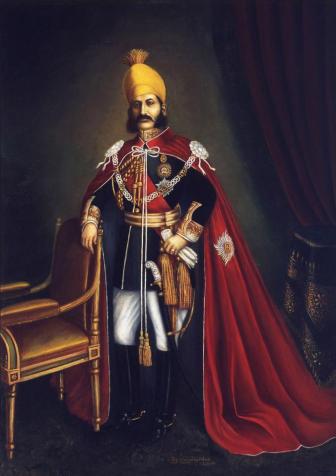
His Highness the Nizam of Hyderabad Mir Mahbub Ali Khan Siddiqui Asaf Jah VI
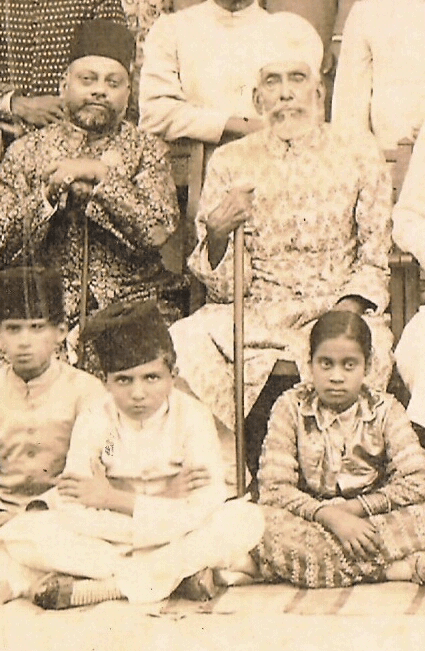
Secunder Yar Jang II Lord Nawab Sayyid Munir ud-Din Khan Asaf Jahi, Taluqdar (back right) with his great grandson Lord Nawab Lt. Colonel Sayyid Mohammed Amir ud-Din Khan Asaf Jahi, the paternal grandfather of Sayyid Ahmed Amiruddin seated with his arms crossed, as a boy. Secunder Yar Jang II Lord Nawab Sayyid Munir-ud-din Khan Asaf Jahi is mentioned by name in the book “Hyderabad State List of Leading Officials, Nobles and Personages” published by Hyderabad Residency Government Press.
On page 59 of the book “Tulasī kī sāhitya-sādhanā: The Legacy of the Nizams”, published by the H.E.H The Nizam’s Urdu Trust Hyderabad, author Lallana Rāya writes of the relationship between Lord Sayyid Ahmed Amiruddin’s ancestor Secunder Yar Jang II Lord Nawab Sayyid Munir ud-Din Khan Asaf Jahi and the King of Hyderabad, His Highness Mir Mahbub Ali Khan Siddiqi, stating Lord Nawab Sayyid Munir ud-Din was a teacher of occult ritual to the King.
Raya writes: “(The King) Mir Mahboob Ali Khan was known to possess healing power for snake bite. With his spell, it is said that the venom of the snake would abate. It was his order that if anyone from the public had a snake bite, he could approach him…It is said that Feudal Lord Nawab Muneeruddin Khan Taluqdar who knew this spell, taught the mantra to Mir Mahboob Ali Khan. When a man suffered from a snake bite, the name of the Mahboob Ali had to be mentioned in these terms: “Mahboob Ali Pasha Ki Dohaee”. Then, the venom would not spread further, or in other words, the venom of the snake would abate. Hence, the name of Mahboob Ali Pasha, and the practice of spell of snake bite became famous throughout Hyderabad.” [Tulasī kī sāhitya-sādhanā: The Legacy of the Nizams by Lallana Rāya, published by the H.E.H The Nizam’s Urdu Trust Hyderabad, 2002. p. 59].
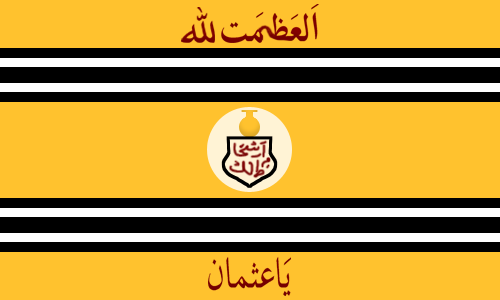
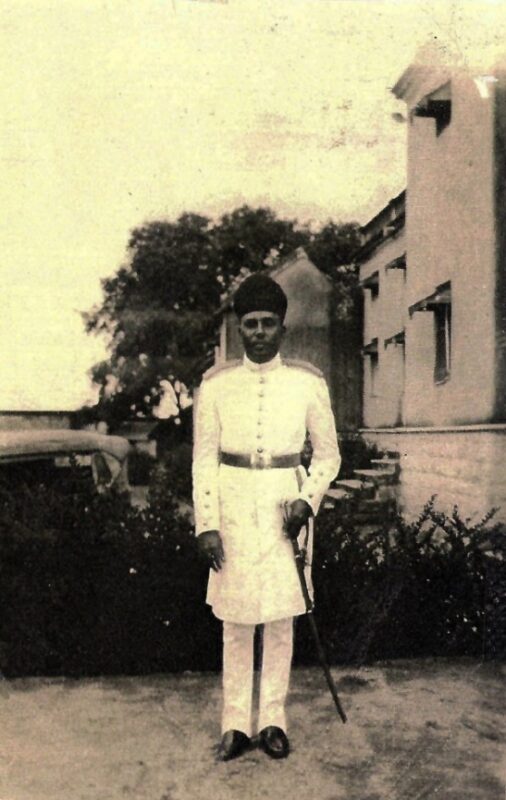
Lord Sayyid Ahmed Amiruddin’s great-grandfather Lord Nawab Sayyid Farid ud-Din Khan Asaf Jahi. Lord Nawab Sayyid Farid ud-Din was educated at The University of Edinburgh.
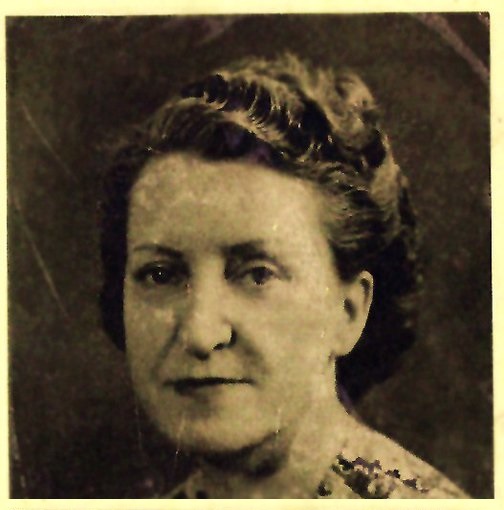
Sayyid Ahmed Amiruddin’s paternal great grandmother Ella Allen (Halima Farid ud-Din). Her brother Murray Allen was a minister of the Presbyterian Church in Scotland. She converted to Islam when she was 16 years old after dreaming of the Holy Ka’aba and married his great grandfather Lord Nawab Sayyid Farid ud-Din Khan Asaf Jahi two years later while he was in Scotland. She followed the Qadiri Sufi Order, and was a Murid of Naqeeb al-Ashraaf fi Dar al-Islam Pir Syed Pir Ibrahim Saif al-Din al-Gilani of Baghdad, Iraq. She had spiritual association with Mawlana Abu Nasr, a Qadiri Sufi Saint and reknowned Majdhub from Baghdad, who lived in Hyderabad on a mountain top. She dreamt of the Holy Prophet (sallallahu alaihi wa sallam) more than 27 times, and claimed to have seen him while conscious during Hajj when she was in Madina tul-Munawwara.
Nawab Lt. Colonel Sayyid Mohammed Amiruddin (1917-2012)

A list of the Qualifications of Lord Nawab Lt. Colonel Amiruddin including his Honors and Awards.
“You (Sayyid Ahmed Amiruddin) are the pride of our family.” – Lord Nawab Lt. Colonel Sayyid Mohammed Amiruddin (1917-2012)
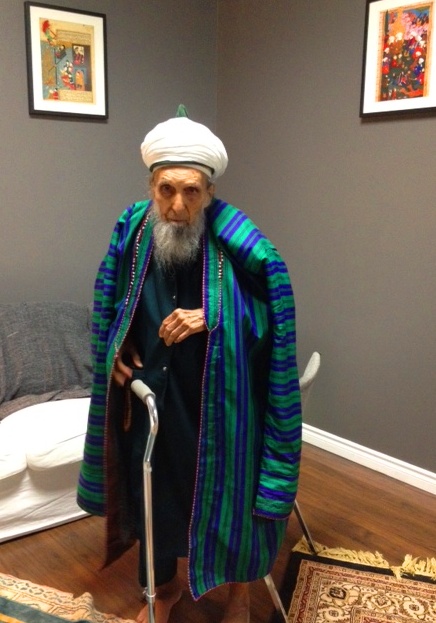
Lord Nawab Lt. Colonel Sayyid Mohammed Amiruddin, grandfather of Lord Sayyid Ahmed Amiruddin at the age of 98 one month prior to his passing.
“The famed preacher from Hyderabad (Deccan), Colonel Amiruddin, at whose hands nearly three thousand Americans have accepted Islam…” – “Note to Revised Edition”, Fatawa-e-Rahimiyah Vol.1, Lajpuri, 1975

The Fatimid Empire: Relation to Egypt’s Husaynid Caliphal Royalty
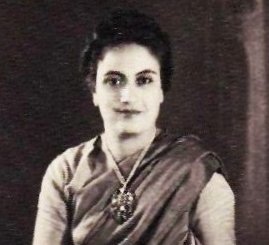
Sayyid Ahmed Amiruddin’s paternal grandmother Safia Ali Akbar.
Herself a descendant of al-Imam Ja’far al-Sadiq, the progenitor of the Fatimid Empire, although not a follower of the Ismaili religious school, Lord Sayyid Ahmed Amiruddin’s paternal grandmother the late Safia Ali Akbar daughter of the late Syed Ali Akbar, shared a great grandfather with Sir Sultan Muhammed Shah, Aga Khan III, GCSI, GCMG, GCIE, GCVO, PC, the 48th Imam of the Nizari Ismaili community.
Safia Ali Akbar’s father Syed Ali Akbar was the son of Captain Syed Mohammed, Commander of the Paigah Army in Hyderabad State and brother of Olympic tennis player Syed Mohammed Hadi. Syed Ali Akbar was referenced in the books ‘Locating Home: India’s Hyderabadis Abroad’ by Karen Isaksen Leonard, published by Stanford University Press (2007) and by E. M. Forster in his classic book ‘A Passage To India’ published by Penguin Classics. E.M. Forster was nominated for the Nobel Prize in Literature in 16 different years and Time magazine included ‘A Passage To India’ in its “All Time 100 Novels” list.
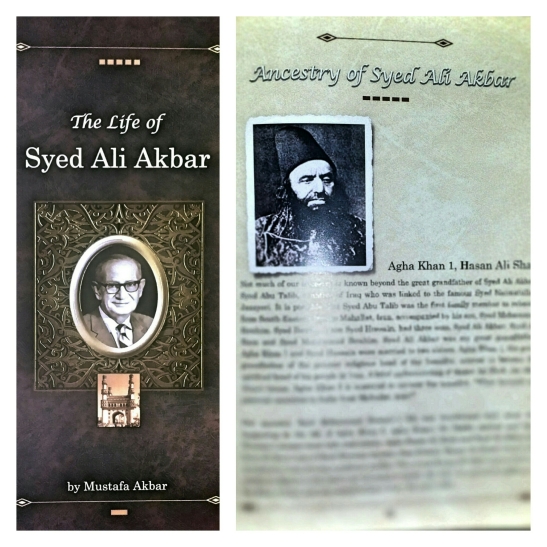
“In the field at Karbala, a fierce battle was waged against Imam al-Ḥusayn. At that time he fought alone against thousands of men. He endured the immense suffering and cruelty by the hands of his enemies and in spite of all this he still proclaimed: “I Am the Imam.” – Aga Khan III
Sir Sultan Muhammed Shah, Aga Khan III, GCSI, GCMG, GCIE, GCVO, PC, was succeeded by his grandson, His Highness Prince Shah Karim Al Hussaini Aga Khan VI, who is the current head of the Nizari line of pretenders to the throne of the Egyptian Arabian Husaynid monarchy of the Fatimid caliphs which ruled Egypt.
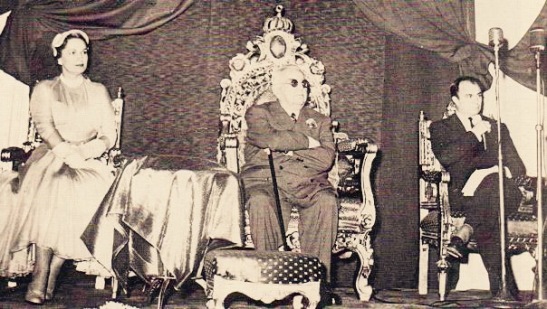
Sir Sultan Muhammed Shah, Aga Khan III, GCSI, GCMG, GCIE, GCVO, PC, the Begum and Prince Aly Khan at the Cairo Ceremony.
From his paternal grandmother, Lord Sayyid Ahmed Amiruddin is a fourth cousin of His Highness Prince Shah Karim Al Hussaini Aga Khan IV, the 49th Nizari Ismaili Imam.
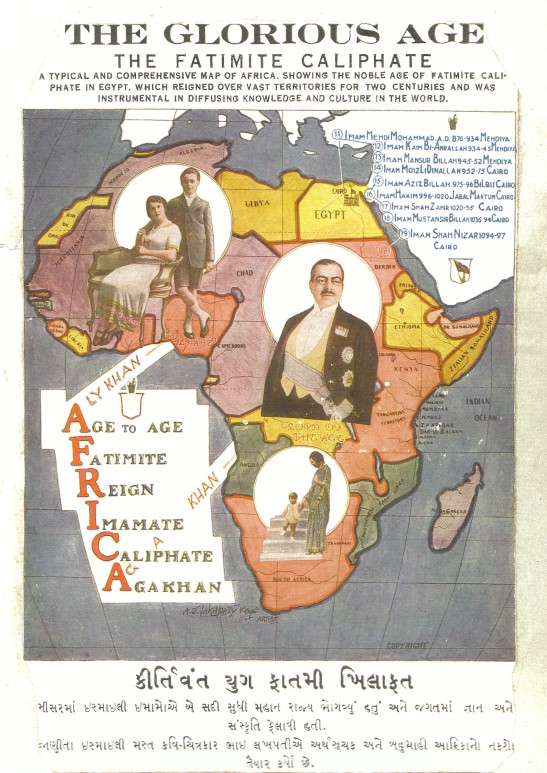
In addition to their descent from the royal family of Islam, the Fatimids, like all Ahl al-Bayt, traced their lineage from the Holy Prophet back to Idris b. Jared, builder of the Great Pyramids of Giza.
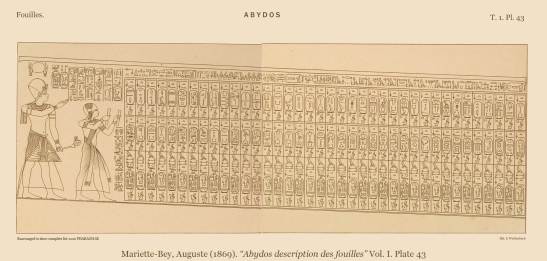
The Abydos Tablet contains the complete Egyptian record of the genealogical line of the Pharaohs back to Adam. It shows Adam as the first Pharaoh, and Noah the twentieth. These names, including Idris (Enoch) as Pharaohs, have royal ovals to indicate their royal status.
Safia Ali Akbar was a descendant of al-Imam Ja’far al-Sadiq, the progenitor of the Fatimid Empire.
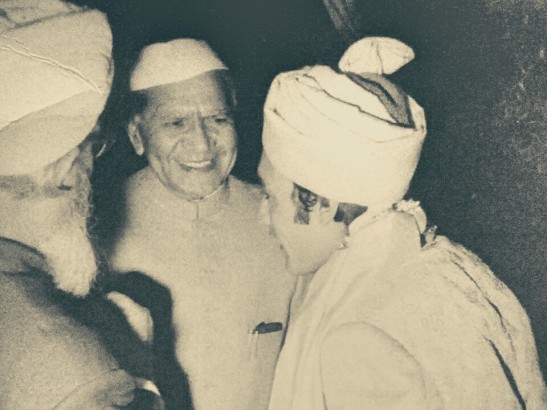
India’s fifth President Fakhruddin Ali Ahmed (centre) in Hyderabad from New Delhi to congratulate Lord Sayyid Ahmed Amiruddin’s father Lord Nawab Sayyid Akram Abbas Khan (right) on his wedding day to Lord Sayyid Ahmed Amiruddin’s mother

Maternal lineage traced to fifth Rashidun Caliph Imam Hasan b. ‘Ali
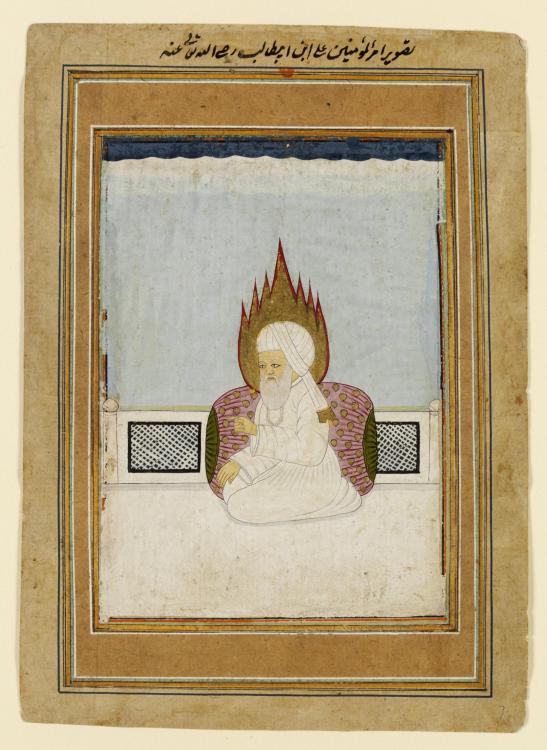
Painting, Imam ‘Ali, opaque watercolour on paper, South India, early 19th century. Victoria and Albert Museum, London.
From his maternal grandmother Lord Sayyid Ahmed Amiruddin is a Hasanid with descent from the fifth Rightly Guided Caliph Imam al-Hasan b. ‘Ali b. Abi Talib. Sayyid’s maternal lineage is traced to Imam al-Hasan from the venerable Shaykh ‘Abd al-Qadir al-Jilani through ‘Abdullah al-Kamil b. Hasan al-Muthanna.
Maternal Biological Relation to Sharifs of Mecca, Idrisids, Jordanian and Moroccan Royalty: House of ‘Abdullah al-Kamil b. Hasan al-Muthanna
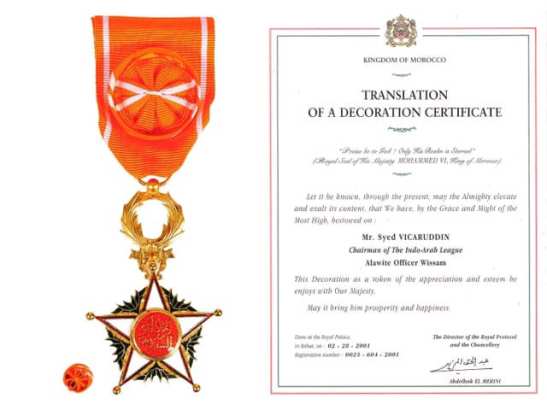
Lord Amiruddin’s mother’s brother His Excellency Lord Syed Vicaruddin, Editor In Chief, Publisher, The Rahnuma-E-Deccan Daily (Urdu) was granted the distinguished rank of Officer of the Royal Order of Alaouite by Sahib al-Jalalah, ’Amir al-Mu’minin, Nassarahu-Illah; His Majesty Commander of the Faithful, may God grant him victory, the King Mohammed VI of Morocco.
Lord Sayyid Ahmed Amiruddin shares ‘Abdullah al-Kamil b. Hasan al-Muthanna, his son Musa al-Jaun, his son ‘Abdullah al-Salih, and his son Musa al-Thani, as common ancestors between this side of his family and the Kings of Morocco, the Hashemites (monarchy), Grand Sharifs and Emirs of Mecca, Kings of Hejaz, Jordan, Syria, and Iraq, the Idrisids of Fez, Hamudites of Spain, Leaders of the Senussi Order, and the King’s of Libya (Idris I).
Descent from Ghawth al-Adham Shaykh ‘Abd al-Qadir al-Jilani
From his maternal grandmother, Lord Sayyid Ahmed Amiruddin is a 26th generation maternal descendent of Ghawth al-Adham Shaykh ‘Abd al-Qadir al-Jilani (may Allah be well pleased with him), the Founder of Tariqah Sufism. His lineage is as follows. Sayyid Ahmed Amiruddin, son of, Sayyida Fazal un-Nisa, daughter of, Sayyida Habib un-Nisa Mohammedi Qadiri, daughter of, Sayyid Shah Ahmad Badshah Qadiri al-Musawi, son of, Sayyid Shah Pir Badshah Qadiri, son of, Sayyid Husayni Badshah Qadiri, son of, Sayyid Shah Musa Qadiri, al-Musawi (Qadas Allahu Sirrah) son of, Sayyid Muhiuddin Muhammad son of, Sayyid Shah Darwaysh Muhiuddin Qadiri son of, Sayyid Muhiuddin Qadiri son of, Sayyid Shah Ghulam Mohiuddin al-Qadiri (Pir Shah Mohiuddin Thani Qadiri) son of, Sayyidul Abdaal Sayyid Shah ‘Abd al- Latif Qadiri, Lawbali, al-Hamawi son of, Sayyid Shah Taher, son of, Sayyid Shah Sharfuddin Zahid Qadiri, son of, Sayyid Kamaluddin Arif Qadiri al-Hamawi, son of, Sayyid Shah Nasiruddin Hashim Qadiri, son of, Sayyid Qutbuddin Muhammad, son of, Sayyid Shabbuddin Ahmed, son of, Sayyid Badruddin Hassan, son of, Sayyid Shah Shaykh Alauddin Abul Hasan ‘Ali, son of, Sayyid Shamsuddin Mohammed Thani, son of, Sayyid Saifuddin Abu Zakariyya Yahya-Al- Hamawi Wa Baghdadi son of, Sayyid Zahiruddin al- Baghdadi, son of, Sayyid Abu Nasr Shamsuddin, son of, Sayyid Imaduddin Abi Saleh Nasr Qadiri, son of, Sayyid Al Aqtab Sayyid Shah Tajuddin ‘Abdur Razzak Qadiri, son of, Qutb Al ‘Arifin Sayyid Al Mashriqayn, Naib Al Rasulullah, Arif Billahil Qaili Bi Amrillah ‘Qadami Hadhi ‘Ala Raqbati Kulli Waliyillahi, Imamul Awliya I Fakhal Asfiyai Ghawthus Samadani Ma’shuqir Rabbani Sahibish Sharia’ti Madanil Tariqati Wal Haqiqati, Jaddina Wa Shaykhina Wa Sayyidina Wa Mawlana Sayyidina ‘Abd al-Qadir al Hasaniul Husayni, al-Ja’fari, al-Jilani (Radiallahu Ta’ala ‘anhu).
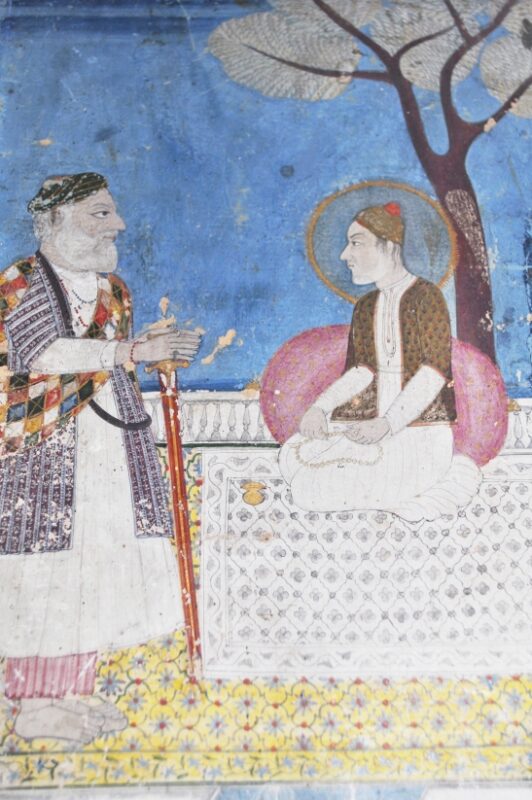
Hadrat Sayyid Husayni Badshah Qadiri son of Hadrat Sayyid Shah Musa Qadiri qadasAllahu sirrahul ‘aziz (left), maternal ancestor of Lord Sayyid Ahmed Amiruddin and a direct descendant of Ghawth al-Adham Shaykh ‘Abd al-Qadir al-Jilani. This original painting of Sayyid Husayni Badshah from 1670-80 is in possession of Lord Sayyid Ahmed Amiruddin.
Maternal Relative of the Royal House of Paigah, Hyderabad

Official archives from court documentation of the blood relation through marriage between the paternal grandfather of Sayyid Ahmed Amiruddin’s maternal grandmother Habib un-Nisa Mohammedi Begum and the Shams ul-Umarah family of the Royal House of Paigah, Hyderabad
The Royal House of Paigah was the senior aristocracy of Hyderabad State during the Asaf Jahi era. The Paigahs tended to be wealthier than the average Indian Maharaja, and each maintained his own court, his own extraordinary palaces, and his own private army.
Sayyid Ahmed Amiruddin’s maternal ancestor Sayyid Husayni Badshah Qadiri’s son Pir Badshah Qadiri married Qamarunissa Begum, the only surviving biological descendant of Nawab Ghulam Imam Khan Imam ul-Mulk. Their son was Sayyid Ahmed Badshah Qadiri, the father of Lord Sayyid Ahmed Amiruddin’s maternal grandmother Habib un-Nisa Mohammedi Begum. Qamarunissa Begum was the first cousin of the Head of the Royal House of Paigah Shams ul-Umara, Amir-i-Kabir, Khurshid ul-Mulk, Khurshid ud-Daula, Nawab ‘Abu’l Fakhr Muhammad Fakhr ud-din Khan Bahadur, Imam Jang ‘Abu’l Khair Khan III, who was also the Prime Minister of Hyderabad between 1848-1849. The Paigahs built the Falaknauma Palace in Hyderabad. Documentation of Sayyid’s relationship to the Paigah royalty was perserved by his maternal grandfather Nawab Syed Yusufuddin, whose grandfather was the Cheif Justice of Hyderabad. In the 1950’s Sayyid Ahmed Amiruddin’s maternal family sued the Amir i-Paigah Nawab Zahir Yar Jung for their inheritance and won.

Imam Zayd b. ‘Ali: Relation to the Brahman Empire of Sindh
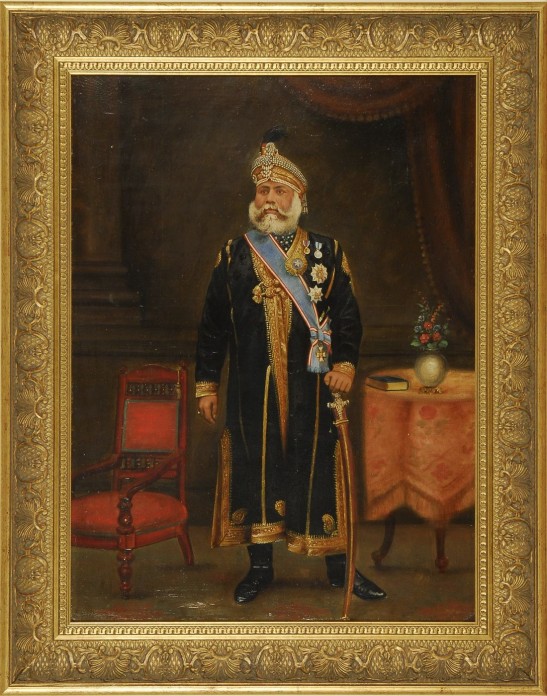
Maharaja Dahir (d.712) son of Maharaja Chach of Alor (d.711), founder of the Brahman Empire of Sindh
“…The greatest departure however of Mirzā Mazhar Jān-i Jānān from the Mujaddidi tradition concerned his attitude towards Hindus. Showing acquaintance with the basic teachings of Hinduism, he stated unequivocally that they too profess the unity of the One and therefore should be exonerated from the charge of polytheism (shirk). Mazhar recognized Krishna and Rama as prophets and the Vedas as of divine origin, and even went so far as to describe Hindu idolworship as resembling the Sufi rabita in that both practices involve using an intermediary for the concentration on God…” [The Naqshbandiyya: Orthodoxy and Activism in a Worldwide Sufi Tradition. Routledge, Jun. 25, 2007]
From his maternal grandfather, Lord Sayyid Ahmed Amiruddin descends from Imam Zayd b. ‘Ali (d.740) whose maternal grandfather was Maharaja Dahir (d.712) the third and last Maharaja of the Brahman Empire of Sindh. The Brahman Empire of Sindh was founded by Maharaja Chach of Alor (d.711), and covered the entire Indus Valley and beyond.
Jaydah al-Sindhi: Jodha of Sindh
Imam Zayd ibn ‘Ali’s mother Jodha of Sindh, known by Muslim chroniclers as Jayda al-Sindhi, converted to Islam and was the daughter of Maharaja Dahir (d.712), the last ruler of the Brahman Dynasty of Sindh which was annexed by the Umayyads in 711 CE. The kings of the Brahman Empire of Sindh followed Indian mysticism (Vedic Monism), and allied themselves – against the Umayyads – as partisans of the ‘Alids (descendants of caliph Imam ‘Ali b. Abi Talib) of the Bani Hashim clan of the Quraysh tribe – also referred to as ‘Alawi in Arabic and Alafi in Sindhi.
Maharaja Chandar of Sindh and Karbala
The founder of the Brahman Empire of Sindh, Maharaja Chach of Alor was succeeded by Maharaja Chandar of Sindh (671 – 679) who had dispatched a Brahman army against the Umayyads known as Hussaini Brahmans, to protect Imam al-Husayn ibn ‘Ali. Maharaja Chandar of Sindh was succeeded by Maharaja Dahir son of Maharaja Chach, and maternal grandfather of Imam Zayd b. ‘Ali, Lord Sayyid Ahmed Amiruddin’s maternal ancestor.
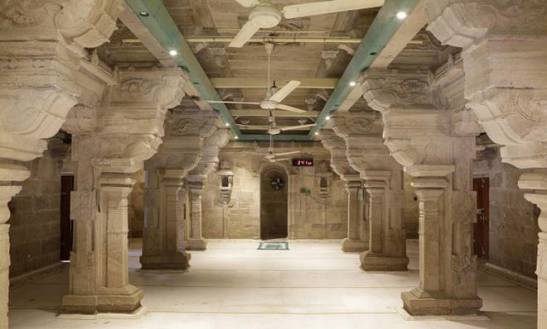
Kilakarai mosque – Palaiya Jumma Palli (pallivasal) India’s oldest mosque and 5th oldest in the world. It is located in Kilakarai, an ancient port town in the South Indian state of Tamil Nadu known for its early Indo-Muslim culture. It was built in 628–630 AD. The mosque is one of the greatest examples of Pancha-Dravida Islam architecture and was constructed during the life of the Prophet Muhammad ﷺ. Pancha-Dravida is one of the two major groupings of Brahmins in Hinduistan, of which the other was Pancha-Gauda.
Related
Brahmins who went to war for the Imam – Times of India
For Hussaini Brahmans, it’s Muharram as usual – Times of India
Karbala and how Lahore was involved – (Pakistan) Dawn

Maternal Side: Recognized Nobility
From his maternal grandfather Lord Nawab Sayyid Yusufuddin son of Lord Nawab Sayyid Zia al-Din son of Lord Nawab Sayyid ‘Arifullah Khan son of Lord Nawab Sayyid Ahmed Ali Khan, the first Chief Justice of Hyderabad [“Pictorial Hyderabad” By Mudiraj K. Krishnaswamy, p. 450], Lord Sayyid Ahmed Amiruddin is a descendant of Mir Sayyid Ghulam Ali Khan of Mysore, who was a direct lineal descendant of Imam Zayd b. ‘Ali known as Imam Zayd ush-Shahid son of Jaydah al-Sindhi and Imam ‘Ali Zayn al-Abidin.
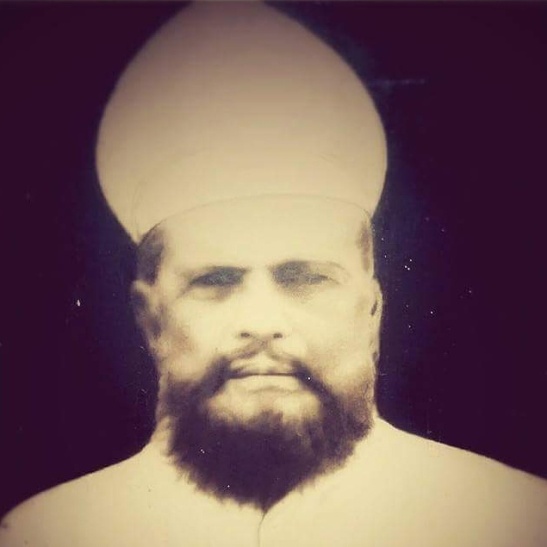
Lord Sayyid Ahmed Amiruddin’s maternal great grandfather Lord Nawab Sayyid Zia al-Din. Lord Nawab Zia al-Din’s estimated net worth today would be the equivalent of $783 million – $1.1 billion USD. His paternal lineage is traced back to Imam Zayd b. Ali b. Husayn b. Ali b. Abi Talib rahmatullahi alaihi.
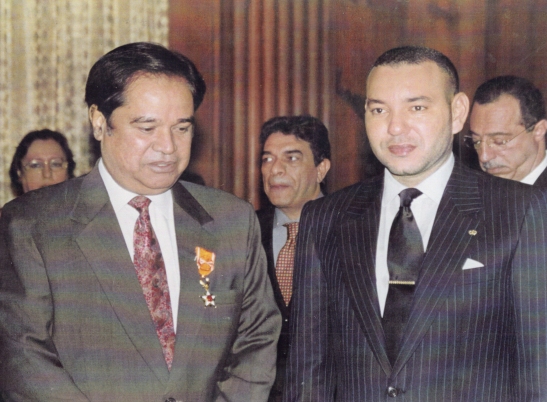
Lord Sayyid Ahmed Amiruddin’s mother’s brother being granted the distinguished rank of Officer of the Royal Order of Alaouite by Sahib al-Jalalah, ’Amir al-Mu’minin, Nassarahu-Illah; His Majesty Commander of the Faithful, may God grant him victory, the King Mohammed VI of Morocco.
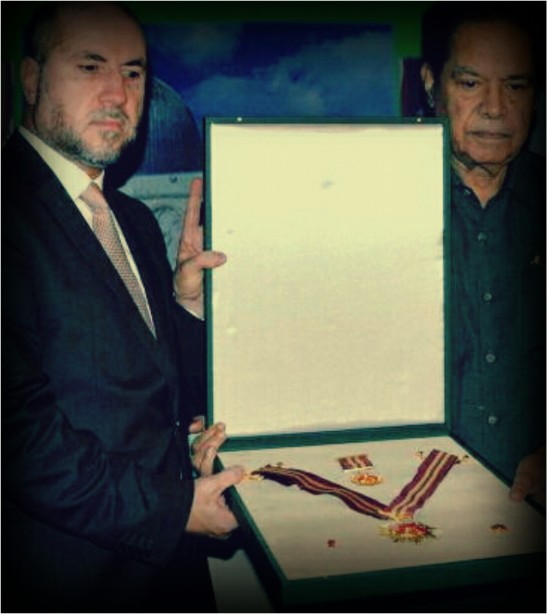
Lord Sayyid Ahmed Amiruddin’s mother’s brother being decorated by the Chief Justice of Palestine with the Order of the Star of Jerusalem (Wissam Najm al-Quds) on behalf of H.E. Palestinian President Mahmoud Abbas. The Order of the Star of Jerusalem is Palestine’s highest honor

Sayyid Ahmed Amiruddin’s mother’s brother being decorated by the Chief Justice of Palestine with the Order of the Star of Jerusalem (Wissam Najm al-Quds) on behalf of H.E. Palestinian President Mahmoud Abbas. The Order of the Star of Jerusalem is Palestine’s highest honor.
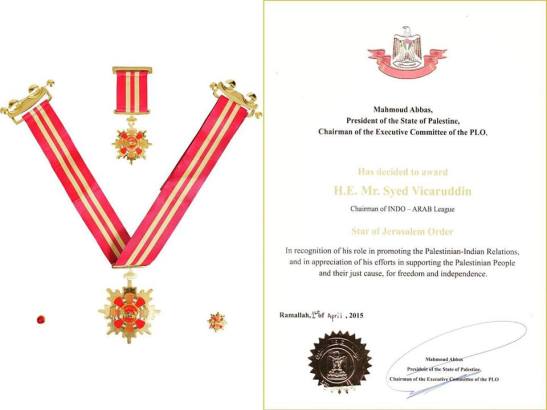
Lord Sayyid Ahmed Amiruddin’s mother’s brother Lord Syed Vicaruddin decorated with the Order of the Star of Jerusalem (Wissam Najm al-Quds) by H.E. Palestinian President Mahmoud Abbas. The Order of the Star of Jerusalem is Palestine’s highest honour.
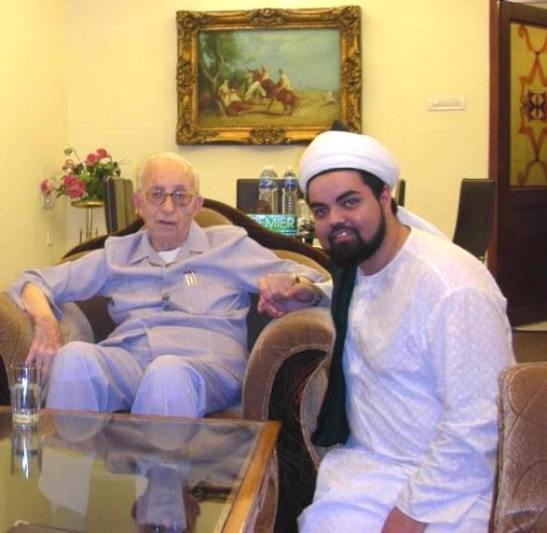
Lord Sayyid Ahmed Amiruddin with H.E. the Naqib al-Ashraaf Sayed Ahmad Dhafar al-Jilani, Custodian of the Mosque and Tomb of Ghawth al-Adham Shaykh ‘Abd al-Qadir al-Jilani, Baghdad, Iraq
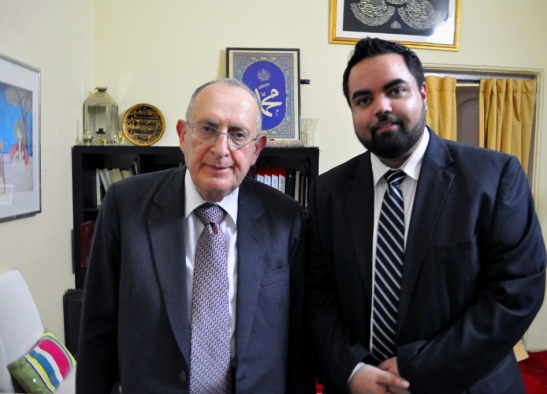
H.E. the new Naqib al-Ashraaf al-Shaykh Sayed ‘Abd al-Rahman al-Jilani the Custodian of the Mosque and Tomb of Ghawth al-Adham Shaykh ‘Abd al-Qadir al-Jilani, Baghdad, Iraq visiting Lord Sayyid Ahmed Amiruddin’s family residence in Hyderabad

With H.E. Pir Salman al-Gailani, son of the venerable Pir Syed Najmuddin al-Gailani and grandson of H.E. Naqib al-Ashraf fi Dar el-Islam Pir Syed Ibrahim Saif al-Din al-Jilani, Sajjadah Nashin and Mutawali of the Mosque and Tomb of Sultan ul-Awliya Ghawth al-Adham Shaykh ‘Abd al-Qadir al-Jilani, Baghdad, Iraq
